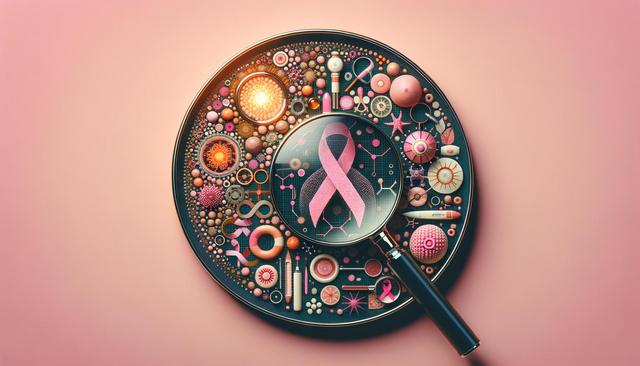Understanding the Early Breast Cancer Symptoms
Recognizing breast cancer symptoms at an early stage can make a significant difference in treatment outcomes. While symptoms can vary from person to person, there are several common indicators that should not be ignored. One of the most frequently reported signs is a new lump or mass in the breast. These lumps are often hard and irregular in shape, although some may be soft and tender. It’s important to note that not all lumps are cancerous, but they should always be evaluated by a healthcare provider.
Other symptoms include:
- Swelling of all or part of the breast
- Skin irritation or dimpling (resembling an orange peel)
- Breast or nipple pain
- Nipple retraction (turning inward)
- Redness, scaliness, or thickening of the nipple or breast skin
- Nipple discharge that is not breast milk
Being aware of these potential signs and seeking timely medical advice can aid in early detection, which plays a crucial role in effective breast cancer treatment.
Key Breast Cancer Risk Factors to Know
Understanding breast cancer risk factors can help individuals make informed choices about their health. While some factors are genetic and cannot be changed, others are related to lifestyle and can be managed. Age is one of the most significant risk factors, with most cases occurring in women over the age of 50. Family history also plays a role; individuals with close relatives who have had breast cancer may be at an increased risk.
Other contributing risk factors include:
- Inherited gene mutations (such as BRCA1 and BRCA2)
- Personal history of breast conditions
- Radiation exposure, especially in youth
- Obesity and physical inactivity
- Alcohol consumption
- Hormone replacement therapy during menopause
Learning about these breast cancer risk factors allows individuals to have proactive discussions with their healthcare providers and consider regular screenings or genetic counseling where appropriate.
Breast Cancer Treatment Options
Once a diagnosis has been made, breast cancer treatment depends on the type, stage, and characteristics of the cancer, as well as the patient’s overall health and personal preferences. Common treatment methods include surgery, radiation therapy, chemotherapy, hormone therapy, and targeted drug therapy. Each approach has its own benefits and potential side effects, and often, a combination of treatments is used to achieve the best outcome.
Here is a brief overview of the main treatment types:
- Surgery: Removal of the tumor or possibly the entire breast (mastectomy)
- Radiation therapy: Uses high-energy rays to target and kill cancer cells
- Chemotherapy: Involves drugs that destroy cancer cells, typically used when the risk of cancer spreading is high
- Hormone therapy: Blocks hormones that fuel certain types of breast cancer
- Targeted therapy: Uses drugs to target specific molecules involved in cancer growth
Choosing the right treatment plan involves careful consultation with a medical team to determine the most suitable and effective approach for each individual case.
Steps Toward Breast Cancer Prevention
While not all cases of breast cancer can be prevented, taking certain steps can help reduce the likelihood of developing the disease. Breast cancer prevention often involves a combination of healthy lifestyle choices and regular medical screenings. Maintaining a healthy weight, engaging in physical activity, and limiting alcohol consumption are all associated with a lower risk of breast cancer.
Additional preventive strategies include:
- Eating a balanced diet rich in fruits and vegetables
- Quitting smoking
- Breastfeeding, if possible, as it may lower risk
- Discussing risk-lowering medications or surgeries with a doctor if at high genetic risk
- Scheduling regular mammograms and clinical breast exams
Early detection through screening remains one of the most effective ways to manage breast cancer risk. Discussing personalized screening schedules with a healthcare provider is especially important for those with family history or other risk factors.
Finding Strength Through Breast Cancer Support Groups
Navigating a breast cancer diagnosis and treatment journey can be emotionally and physically challenging. For many individuals, connecting with others who are going through similar experiences offers vital emotional support and practical advice. Breast cancer support groups can provide a safe space to share feelings, learn from others, and receive encouragement throughout treatment and recovery.
Support groups may be available in various formats:
- In-person group meetings led by trained facilitators
- Online forums and social media communities
- Telephone support groups for those unable to attend in person
- Specialized groups for different age groups, stages of cancer, or treatment types
Joining breast cancer support groups can help reduce feelings of isolation and empower individuals to stay informed and hopeful. These communities often provide access to resources, coping strategies, and peer guidance, all of which can contribute to improved emotional well-being during and after treatment.
Conclusion: Proactive Awareness Makes a Difference
Being informed about the warning signs of breast cancer—and understanding the associated risk factors, treatment options, and preventive steps—can empower individuals to take control of their health. Early detection remains a key element in improving outcomes, and regular consultations with healthcare providers are essential. Whether through lifestyle changes, routine screenings, or connecting with breast cancer support groups, proactive steps can lead to greater awareness, timely intervention, and a stronger support system for those affected.




Leave a Reply